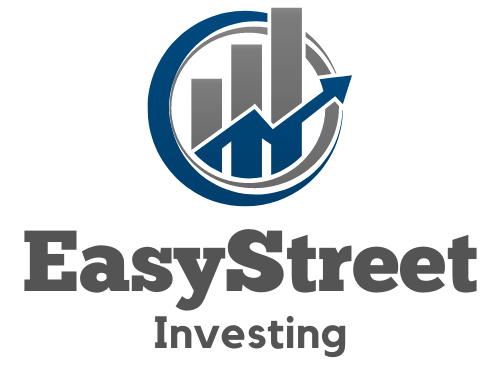In the quest for a robust retirement plan, adding peer-to-peer lending to your portfolio might just be the game-changer you’re looking for. This burgeoning investment avenue allows individuals to loan money directly to borrowers, bypassing traditional financial institutions. By diving into this article, you’ll uncover how to blend peer-to-peer lending with your retirement savings, potentially boosting your nest egg’s growth.
As we peel back the layers of this innovative investment strategy, you’ll learn the nuts and bolts of incorporating it seamlessly into your long-term financial blueprint. We’ll touch on risk assessment, diversification, and expected returns—key components that could spell out greater earning potential for savvy investors. Stick around, and let’s explore how peer-to-peer lending can add a fresh spin to your retirement planning, making it as vibrant and dynamic as the market itself.
Important Highlights
1. Peer-to-peer lending, also known as P2P lending, offers an alternative investment route for retirement portfolios by connecting borrowers directly with investors through online platforms. This method can result in potentially higher returns compared to traditional fixed-income investments due to the absence of intermediary financial institutions, which often leads to lower overhead costs and more favorable interest rates for both lenders and borrowers.
2. Diversification is a key strategy in retirement planning, and integrating P2P investments into a retirement portfolio can provide exposure to a new asset class. By allocating a portion of funds to peer-to-peer loans, investors can spread their risk across various loan types and borrower profiles, potentially reducing the impact of volatility in other areas of their portfolio.
3. Risk assessment is crucial when considering P2P lending for retirement savings; platforms offer different levels of risk based on loan grades assigned to borrowers. Investors should thoroughly evaluate borrower creditworthiness, loan purpose, and historical default rates. Tools such as automated investing can help manage risk by spreading investments across numerous loans rather than focusing on individual high-risk opportunities.
4. Liquidity can be a concern with P2P lending, as loans are typically locked in until maturity. However, some platforms feature secondary markets where investors can sell their loans to others before term completion. It’s essential for retirees to understand these options and consider maintaining a balance between liquid assets and longer-term P2P loan commitments within their overall retirement strategy.
5. Tax considerations cannot be overlooked when incorporating P2P lending into retirement portfolios. Interest earned from peer-to-peer loans is typically taxed as ordinary income, not capital gains. Retirees must plan accordingly for potential tax liabilities associated with their P2P investments, possibly consulting with tax professionals or using IRS resources like the official website for guidance on reporting and deductions related to this type of income.
Understanding Peer-to-Peer Lending
Peer-to-peer (P2P) lending is a method of debt financing that enables individuals to lend and borrow money without the use of an official financial institution as an intermediary. This innovative platform connects borrowers directly with investors through a secure online interface, providing a new avenue for generating returns on capital.
Risks and Rewards of P2P Investments
P2P lending can potentially offer higher returns compared to traditional fixed-income investments. However, it also carries unique risks such as the lack of insurance on your loans, the possibility of borrower default, and a less liquid secondary market. Diversifying across various loans can mitigate some risk, but investors should perform due diligence before committing funds.
Evaluating Loan Listings
When selecting loans to invest in, consider factors such as credit scores, debt-to-income ratios, and borrower history. Platforms like Prosper provide comprehensive data for lenders to assess the risk level of potential investments.
Strategic Allocation in Retirement Portfolios
Incorporating P2P lending into retirement portfolios requires a strategic approach. Allocate only a portion of your portfolio to P2P loans to maintain balance and reduce exposure to any single asset class. The exact percentage will depend on your individual risk tolerance and retirement timeline.
Tax Considerations for P2P Lending
The income generated from P2P lending is typically taxed as ordinary income. It’s crucial to understand how these earnings may impact your overall tax liability. Consider consulting with a tax professional or utilizing resources from the IRS for guidance specific to P2P lending investments.
Liquidity Concerns with P2P Loans
P2P loans are generally illiquid assets; thus, they should be viewed as long-term investments. Some platforms offer secondary markets where you can sell your loans, but this is not guaranteed and pricing can be volatile.
Diversification Across Loan Types
To spread risk effectively, diversify not only across multiple loans but also different loan types—such as personal loans, business loans, and real estate loans. This strategy helps protect against sector-specific downturns.
Monitoring Your P2P Investment Performance
Regularly monitor the performance of your P2P portfolio just as you would with stocks or bonds. Adjustments may be needed based on changes in market conditions or personal financial goals.
Integrating with Traditional Retirement Accounts
P2P lending can complement traditional retirement vehicles like IRAs or 401(k)s. Some P2P platforms allow for investment through self-directed IRAs, which offers the benefit of tax-advantaged growth.
Selecting the Right Platform for Your Needs
Choose a P2P lending platform that aligns with your investment goals and risk profile. Research reviews and compare features across platforms such as Lending Club, Funding Circle, and others that facilitate these types of investments.
Inflation Impact on Fixed-Income Investments
In an inflationary environment, fixed-income investments like P2P loans might lose purchasing power over time. Consider this aspect when determining the role of P2P lending within your retirement strategy.
Balancing Risk with Insurance Products
Incorporate insurance products such as annuities into your retirement plan for additional stability alongside your P2P investments, creating a more robust safety net against market volatility.
How Can You Stay Informed About Industry Changes?
Stay abreast of industry developments by subscribing to financial newsletters from authoritative sources such as Bloomberg. Being informed helps you make timely adjustments to your portfolio strategy.
- Evaluate each potential P2P loan carefully considering borrower creditworthiness and loan purpose.
- Maintain a diversified portfolio by spreading investments across various loan grades and types.
- Understand the liquidity constraints associated with P2P lending before allocating funds.
- Mindful tax planning is essential for managing potential liabilities arising from peer-to-peer investment income.
- Monitor your investments regularly and adjust strategies according to changes in financial goals or market conditions.
- Utilize self-directed IRAs when possible to take advantage of tax benefits while investing in peer-to-peer loans.
- Become familiar with platform-specific features and select one that suits your needs best after thorough comparison.
- Incorporate other stable investment products like annuities to counterbalance the inherent risks in peer-to-peer lending.
- Stay updated on financial trends affecting peer-to-peer lending to enhance decision-making agility within retirement planning.
Frequently Asked Questions
What is Peer-to-Peer Lending?
Peer-to-peer (P2P) lending is a way of borrowing money directly from individuals, without the involvement of traditional financial institutions like banks. It’s done through online platforms where borrowers and lenders are matched, making the process relatively straightforward.
How Can P2P Lending Benefit My Retirement Portfolio?
P2P lending can add diversification to your retirement portfolio by providing potential for higher returns compared to traditional fixed-income investments. Also, it allows you to support individual borrowers or small businesses directly.
Is Investing in P2P Loans Risky?
All investments carry risk, and P2P lending is no exception. The risk includes the chance that borrowers may default on their loans. However, many platforms offer ways to mitigate this risk by allowing you to spread your investment across multiple loans.
Can I Use My IRA to Invest in P2P Lending?
Yes, some P2P platforms offer options for investing through an Individual Retirement Account (IRA), which can provide tax advantages while investing in P2P loans.
What Should I Consider Before Adding P2P Lending to My Portfolio?
Consider your overall investment goals, risk tolerance, and how P2P lending fits into your existing retirement strategy. Also, take into account the liquidity of P2P investments as they’re often less liquid than traditional stocks or bonds.
How Do I Choose a P2P Platform?
Look for platforms with a good track record, transparent fee structures, and robust credit assessment processes. It’s also important to consider the platform’s default rates and recovery processes.
What Amount Should I Invest in P2P Loans?
Your investment should align with your risk profile and retirement goals. Start with a smaller amount that you’re comfortable with and consider increasing it as you become more familiar with how P2P lending works within your portfolio.
How Do Returns from P2P Lending Get Taxed?
The interest you earn from P2P lending is typically taxed as ordinary income. However, tax treatment can vary depending on how you invest (e.g., through an IRA). Consult a tax advisor for personalized advice.
Can I Access My Money Quickly If Needed?
P2P investments are not as liquid as some other types of assets. While some platforms may offer secondary markets or early exit features, accessing your money quickly may not always be guaranteed.
Should I Consult a Financial Advisor About P2P Lending?
Absolutely. A financial advisor can help you understand how P2P lending fits into your unique financial situation and retirement planning strategy.
In Summary: Balancing Innovation with Security in Your Golden Years
Incorporating peer-to-peer lending into retirement portfolios offers an innovative way to seek higher yields while supporting others financially. When managed wisely and blended into a diversified investment strategy, it can enhance retirement income potential without excessive risk-taking.
Always exercise due diligence when selecting a platform and determining the portion of your savings to allocate. As economic climates change, staying informed and agile will help maintain balance between modern investment avenues like P2P lending and time-tested retirement strategies.

